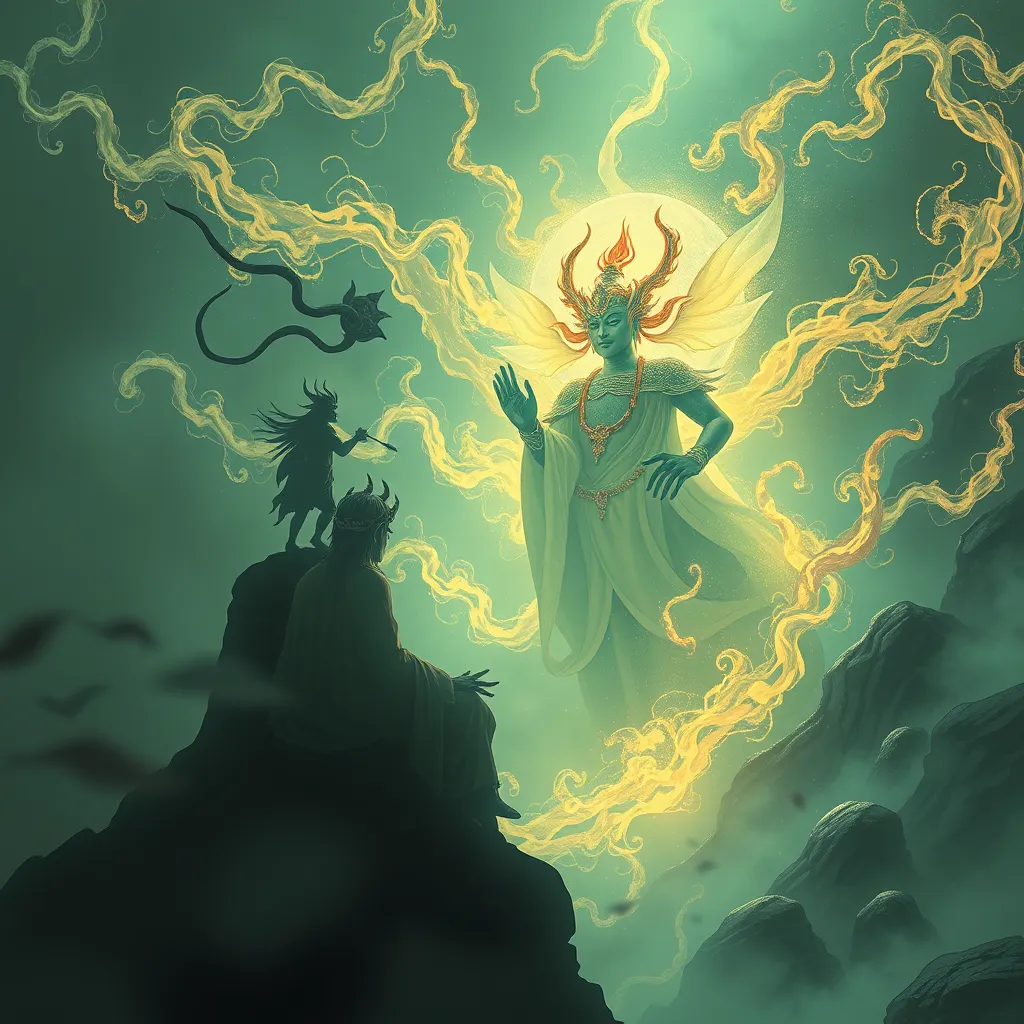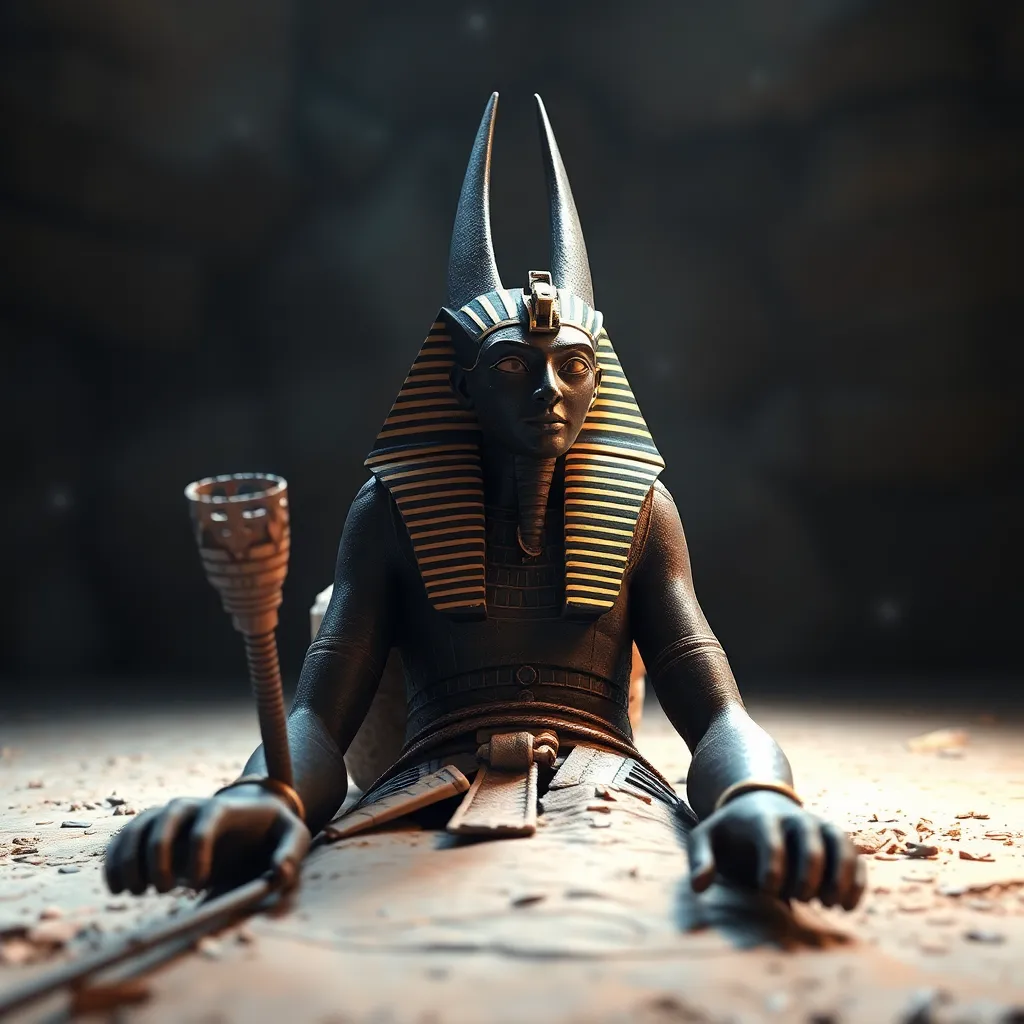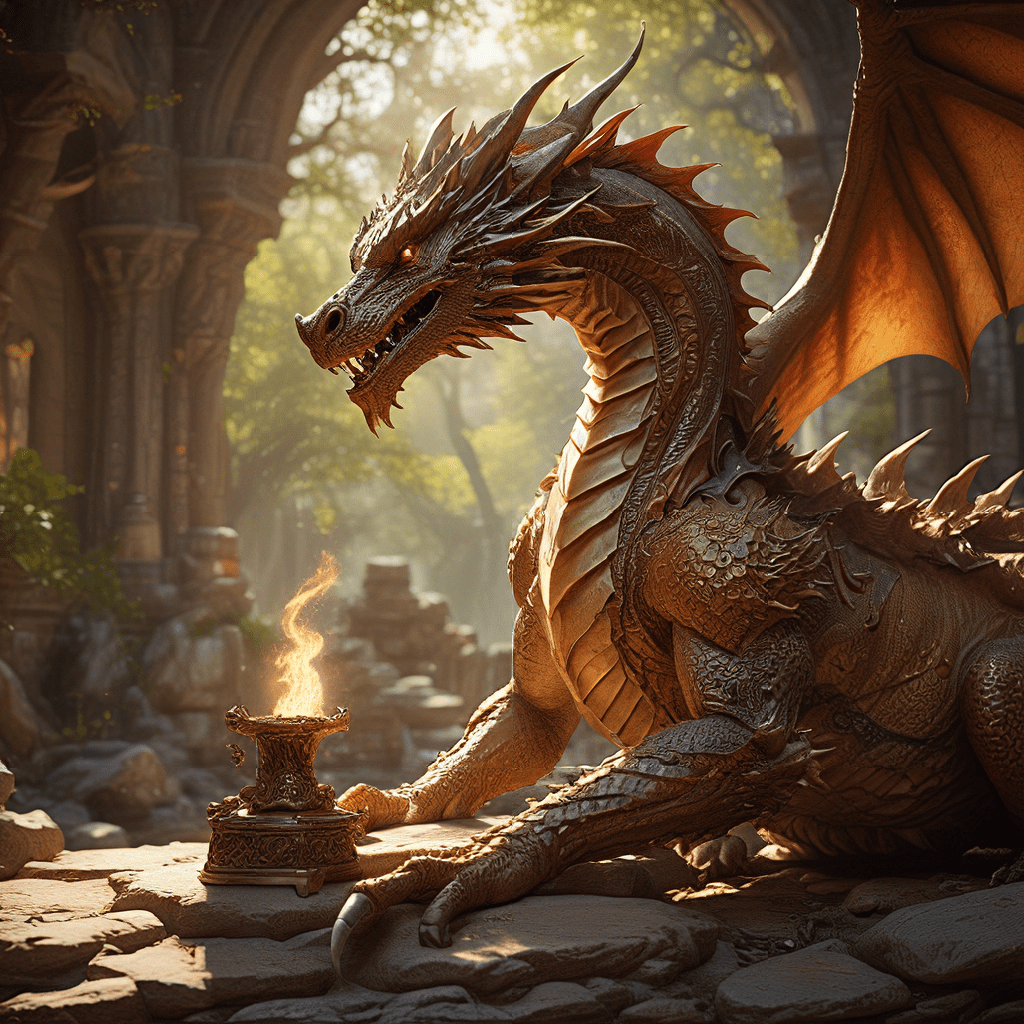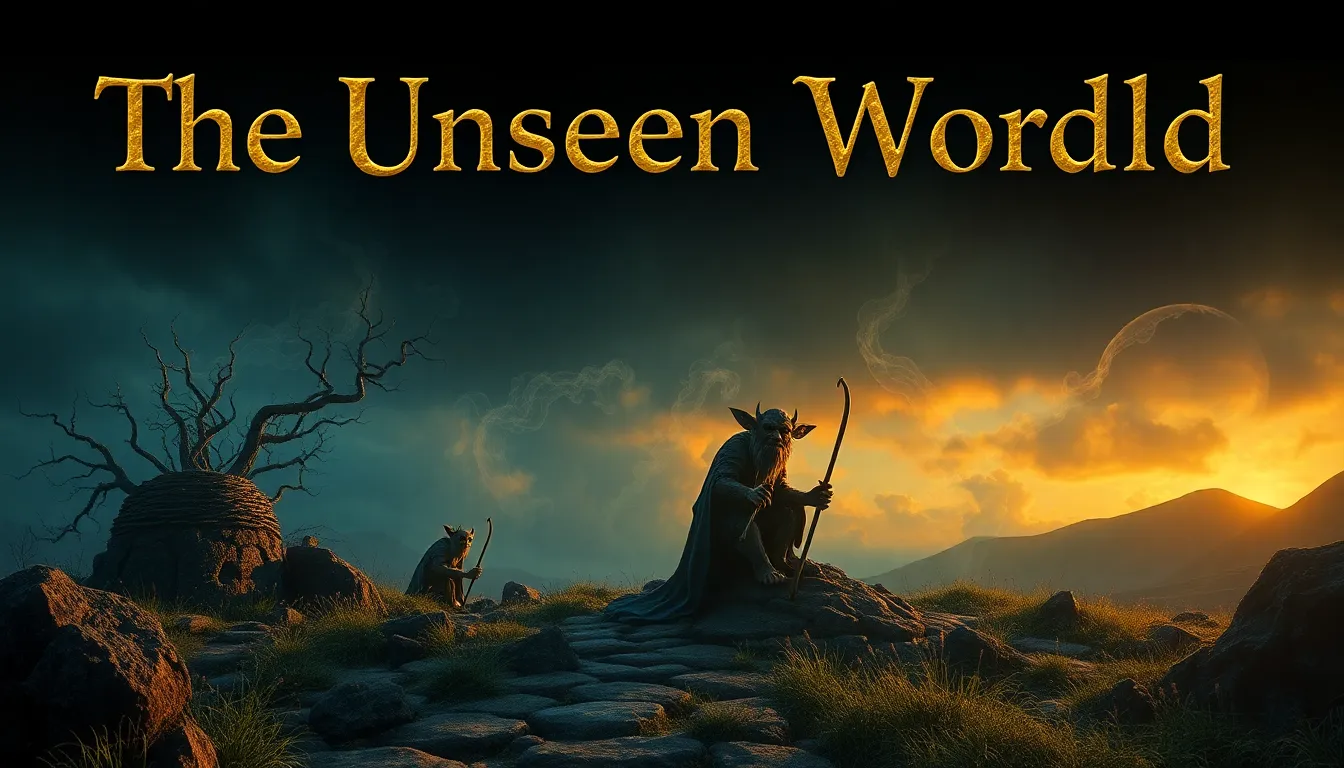The Jinn in Buddhist Mythology: Encounters with Mara and Otherworldly Beings
I. Introduction
In the vast tapestry of mythologies around the world, the concept of Jinn holds a unique place, particularly in Arabian and Islamic traditions. These supernatural beings, often depicted as spirits or entities with free will, can embody both benevolence and malevolence. In parallel, Buddhist mythology presents a rich array of supernatural figures, including the notorious Mara, who plays a pivotal role in the spiritual journey of enlightenment. This article aims to explore the intersections between Jinn and Buddhist mythology, particularly through encounters with Mara and otherworldly beings.
II. Understanding Jinn: Origins and Characteristics
A. Historical background of Jinn in Arabian and Islamic traditions
The origins of Jinn can be traced back to pre-Islamic Arabian culture, where they were thought to inhabit desolate places and could influence human affairs. With the advent of Islam, Jinn were incorporated into religious texts, including the Quran, which describes them as creatures made from smokeless fire. They possess free will, allowing them to choose between good and evil, much like humans.
B. Nature and attributes of Jinn: benevolent vs. malevolent
Jinn are often categorized into two main types:
- Benevolent Jinn: These beings are often viewed as guardians or helpful spirits, assisting humans in various endeavors.
- Malevolent Jinn: These entities are considered deceptive and harmful, capable of leading individuals astray or causing misfortune.
C. Jinn in cross-cultural contexts and their representation in Buddhism
Jinn have transcended their Arabian origins, appearing in various cultures and belief systems. In the context of Buddhism, while Jinn are not explicitly mentioned, their characteristics can be likened to certain supernatural beings within Buddhist cosmology. This convergence of ideas highlights the fluidity of mythological constructs across different cultures.
III. Mara: The Tempter in Buddhist Tradition
A. Introduction to Mara and his significance in Buddhist teachings
Mara is a central figure in Buddhist mythology, representing the obstacles and temptations that one faces on the path to enlightenment. Often depicted as a demon or tempter, Mara embodies the distractions and desires that can lead a practitioner away from spiritual growth.
B. The role of Mara as an adversary of enlightenment
In the narratives surrounding the Buddha, Mara is often portrayed as the adversary who seeks to thwart the Buddha’s quest for enlightenment. His attempts to seduce the Buddha with worldly pleasures and fears symbolize the inner struggles faced by individuals on their spiritual paths.
C. Comparative analysis of Mara with Jinn-like figures
When comparing Mara to Jinn, several similarities arise:
- Both serve as embodiments of temptation, challenging individuals to remain focused on their spiritual goals.
- They can appear in various forms, adapting to the fears and desires of their targets.
- Both figures highlight the duality of existence, illustrating the constant struggle between good and evil.
IV. Encounters with Mara: Stories and Symbolism
A. Key narratives involving Mara in Buddhist texts
One of the most famous encounters with Mara occurs during the Buddha’s meditation under the Bodhi tree. As the Buddha approached enlightenment, Mara sent his daughters to seduce him and summoned his army to instill fear. However, the Buddha remained steadfast, ultimately achieving enlightenment and overcoming Mara’s temptations.
B. Symbolic meaning of encounters with Mara in the quest for enlightenment
The encounters with Mara symbolize the internal and external struggles faced by anyone seeking enlightenment. They represent the distractions and fears that can derail one’s spiritual journey, emphasizing the importance of mindfulness and resilience.
C. Lessons learned from these encounters
From the stories of Mara, several lessons emerge:
- The significance of self-awareness and understanding one’s own desires.
- The necessity to confront and overcome internal fears.
- The value of perseverance in the face of temptation.
V. Otherworldly Beings in Buddhist Cosmology
A. Overview of various supernatural beings in Buddhist mythology
Buddhist cosmology is populated by numerous supernatural beings, including gods, spirits, and celestial beings. These entities play various roles, from protecting the Dharma to offering guidance to practitioners.
B. The relationship between Jinn and other celestial beings
While Jinn are primarily associated with Islamic tradition, their attributes resonate with certain celestial beings in Buddhism, such as the Devas. Both share qualities of free will and the ability to influence human affairs, though their motivations and moral standings may differ.
C. Exploration of the roles these beings play in Buddhist teachings
In Buddhist teachings, supernatural beings often serve as reminders of the consequences of attachment and desire. They underscore the importance of focusing on the path to enlightenment and the need to transcend earthly distractions.
VI. Syncretism: The Integration of Jinn into Buddhist Thought
A. Historical instances of cultural exchange between Islamic and Buddhist traditions
The historical interactions between Islamic and Buddhist cultures, particularly in regions like Central Asia and South Asia, have led to a fascinating exchange of ideas. This cultural syncretism has allowed the integration of Jinn-like figures into Buddhist folklore.
B. The adaptation of Jinn within Buddhist folklore
In certain Buddhist traditions, Jinn have been reinterpreted as protective spirits or beings that assist in spiritual practice, showcasing the adaptability of mythological constructs across cultures.
C. Modern interpretations and relevance of Jinn in contemporary Buddhism
Today, the concept of Jinn continues to be relevant in discussions about spirituality and morality within Buddhist contexts. They serve as metaphors for the inner demons one must confront on the path to enlightenment.
VII. Comparative Analysis: Jinn, Mara, and Other Mythological Figures
A. Similarities and differences between Jinn and Mara
Both Jinn and Mara represent the challenges faced in the pursuit of spiritual enlightenment, yet they originate from different cultural narratives:
- Jinn are diverse entities with a wide range of characteristics, while Mara is specifically focused on temptation and distraction.
- Jinn can be either benevolent or malevolent, whereas Mara is predominantly portrayed as an adversary.
B. Connections with other mythological beings from different cultures
Similar themes of temptation and duality can be found in various mythologies worldwide, such as the Greek myth of the Sirens or the Christian figure of the Devil. These connections highlight universal human experiences in the quest for spiritual truth.
C. Thematic exploration of temptation, enlightenment, and duality
Through the lens of Jinn and Mara, the broader themes of temptation, the pursuit of enlightenment, and the duality of existence unfold, offering profound insights into the human condition across different cultures.
VIII. Conclusion
A. Recap of key points discussed in the article
This exploration of Jinn and Mara reveals the intricate relationships between different mythological figures and the shared experiences of temptation and enlightenment.
B. Reflection on the significance of Jinn and Mara in spiritual narratives
Both Jinn and Mara serve as essential components of spiritual narratives, representing the challenges and distractions that individuals face on their paths. Their stories encourage self-reflection and perseverance.
C. Final thoughts on the enduring legacy of these encounters in both Buddhism and broader mythology
The enduring legacy of Jinn and Mara in mythology underscores the universal struggle against temptation and the pursuit of enlightenment, reminding us of the complexities of the human experience across cultures and belief systems.



